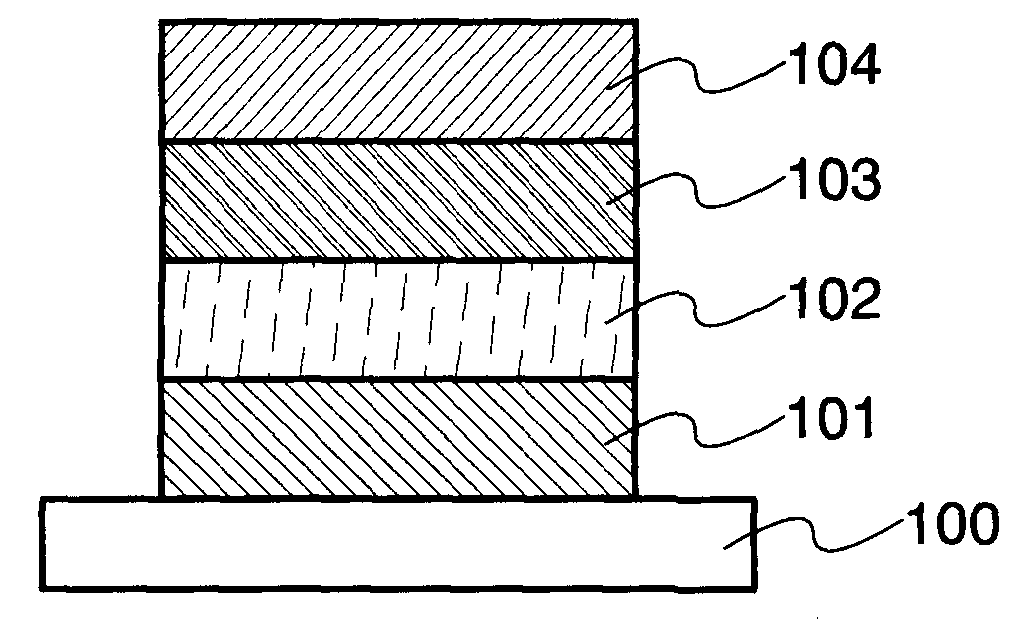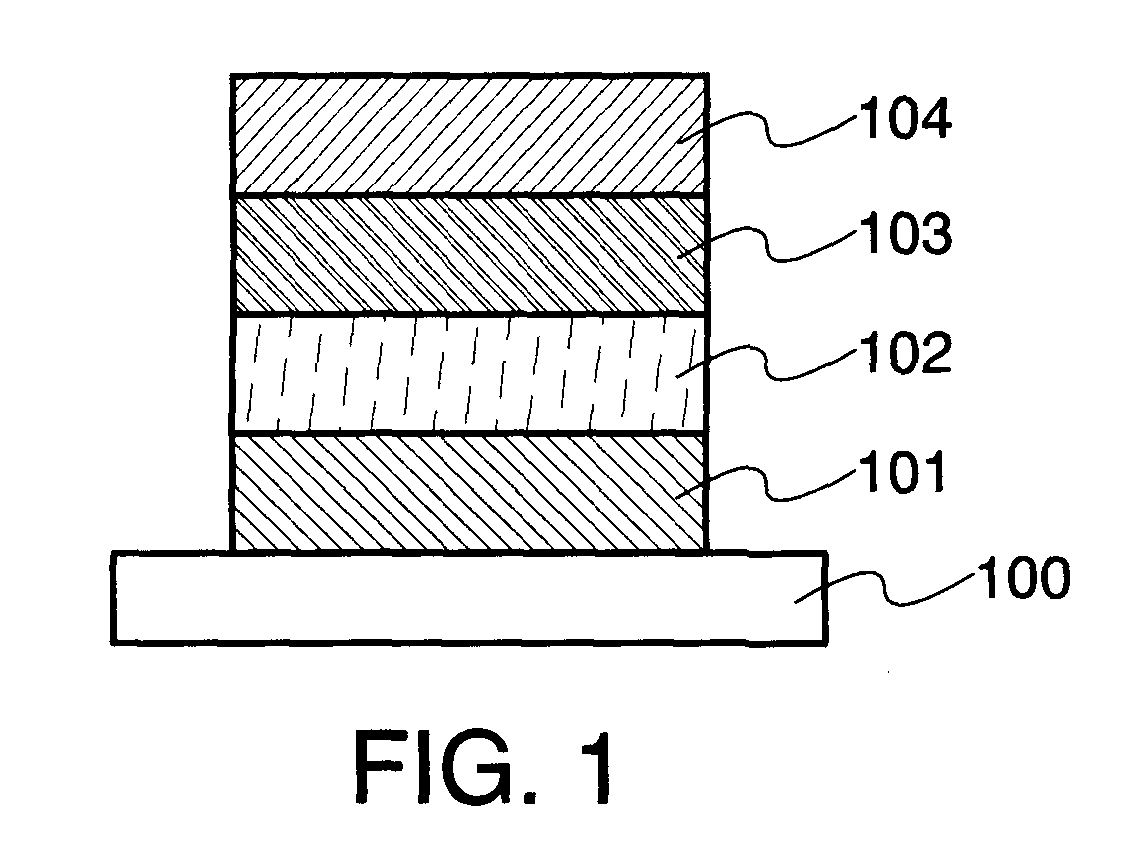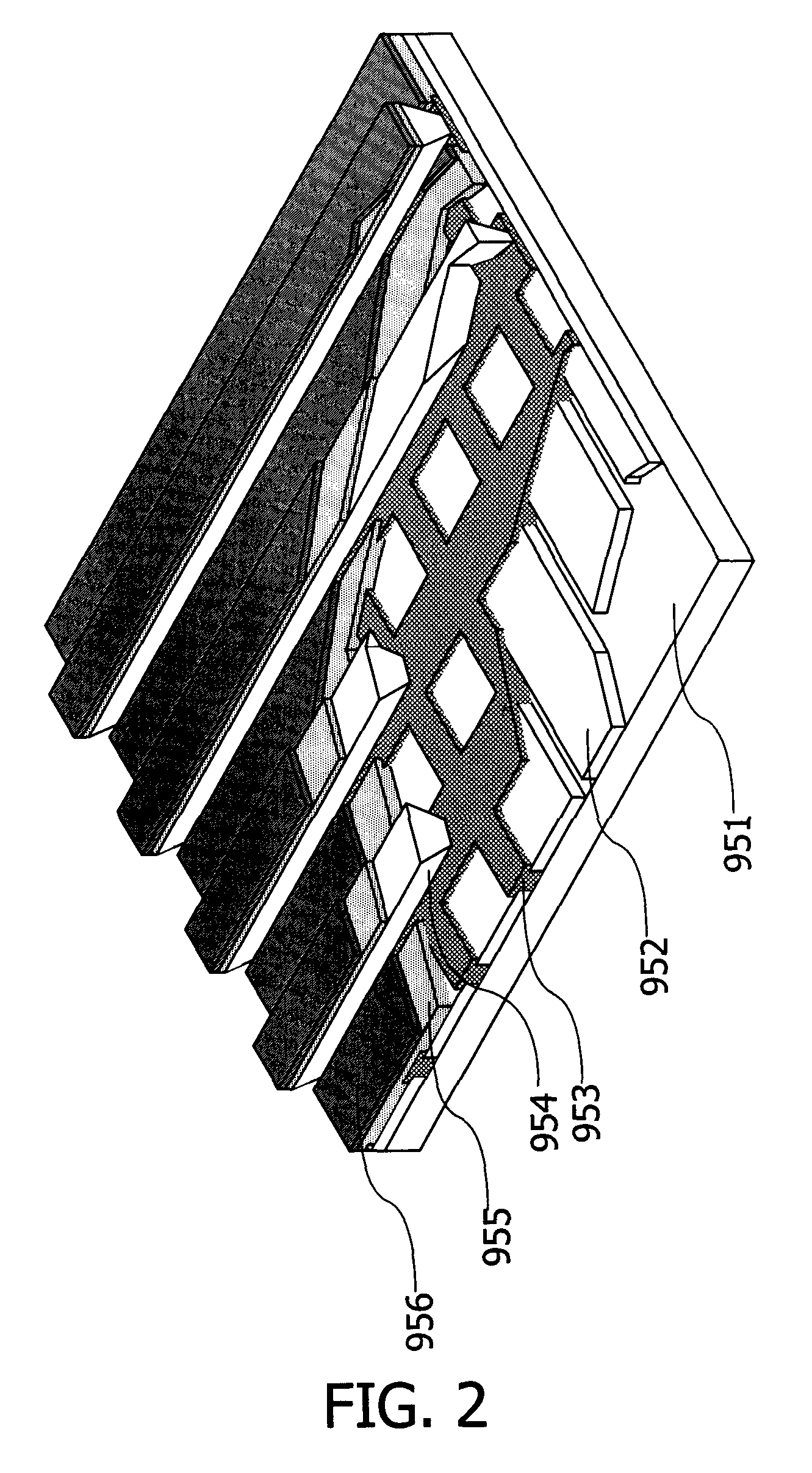Light emitting element, light emitting device, and electronic device
- Summary
- Abstract
- Description
- Claims
- Application Information
AI Technical Summary
Benefits of technology
Problems solved by technology
Method used
Image
Examples
embodiment modes
[0030]Hereinafter, embodiment modes of the present invention will be described below in detail with reference to the accompanying drawings. However, the present invention is not limited to the description below, and those skilled in the art will appreciate that a variety of modifications can be made to the embodiment modes without departing from the spirit and scope of the invention. Accordingly, the present invention should not be construed as being limited to the embodiment modes described below.
embodiment mode 1
[0031]In this embodiment mode, a thin film light emitting element of the present invention will be described with reference to FIG. 1.
[0032]A light emitting element described in this embodiment mode has a structure which includes a first electrode 101 and a second electrode 104 which are formed over a first substrate 100. A p-type semiconductor layer 102 and an n-type semiconductor layer 103 are sandwiched between the first electrode 101 and the second electrode 104. Note that in the description of this embodiment mode, the first electrode 101 serves as an anode and the second electrode 104 serves as a cathode.
[0033]The substrate 100 is used as a support for the light emitting element. As the substrate 100, glass, quartz, plastic, or the like can be used, for example. Note that as long as the substrate serves as a support for the light emitting element in the manufacturing process, materials other than these can be used for the substrate.
[0034]As the first electrode 101 and the seco...
embodiment mode 2
[0045]In this embodiment mode, a light emitting device having a light emitting element of the present invention will be described with reference to FIG. 2.
[0046]The light emitting device described in this embodiment mode is a passive light emitting device in which a light emitting element is driven without an element for driving, such as a transistor, being provided. FIG. 2 shows a perspective view of a passive light emitting device manufactured applying the present invention.
[0047]In FIG. 2, over a substrate 951, a semiconductor layer 955 is provided between an electrode 952 and an electrode 956. Note that the semiconductor layer 955 includes either the stacked layer structure of the p-type semiconductor layer and the n-type semiconductor layer described in Embodiment Mode 1, or a mixed layer of a p-type semiconductor and an n-type semiconductor.
[0048]An end portion of the electrode 952 is covered by an insulating layer 953. Further, over the insulating layer 953, a partition wall ...
PUM
 Login to View More
Login to View More Abstract
Description
Claims
Application Information
 Login to View More
Login to View More - R&D
- Intellectual Property
- Life Sciences
- Materials
- Tech Scout
- Unparalleled Data Quality
- Higher Quality Content
- 60% Fewer Hallucinations
Browse by: Latest US Patents, China's latest patents, Technical Efficacy Thesaurus, Application Domain, Technology Topic, Popular Technical Reports.
© 2025 PatSnap. All rights reserved.Legal|Privacy policy|Modern Slavery Act Transparency Statement|Sitemap|About US| Contact US: help@patsnap.com



